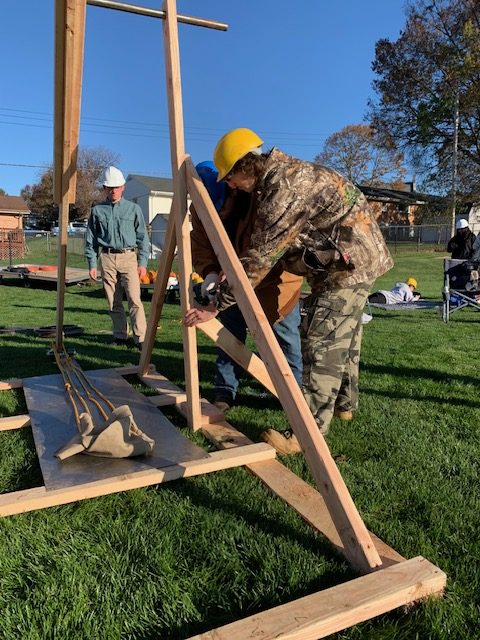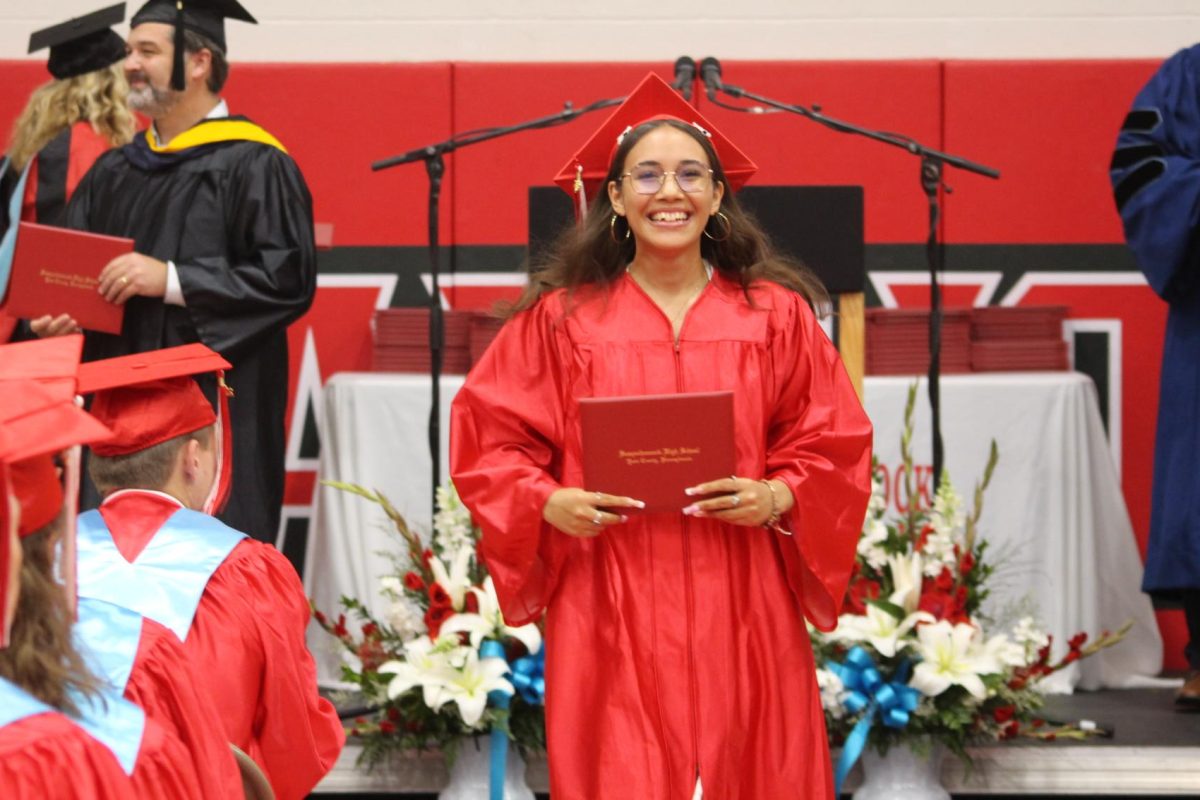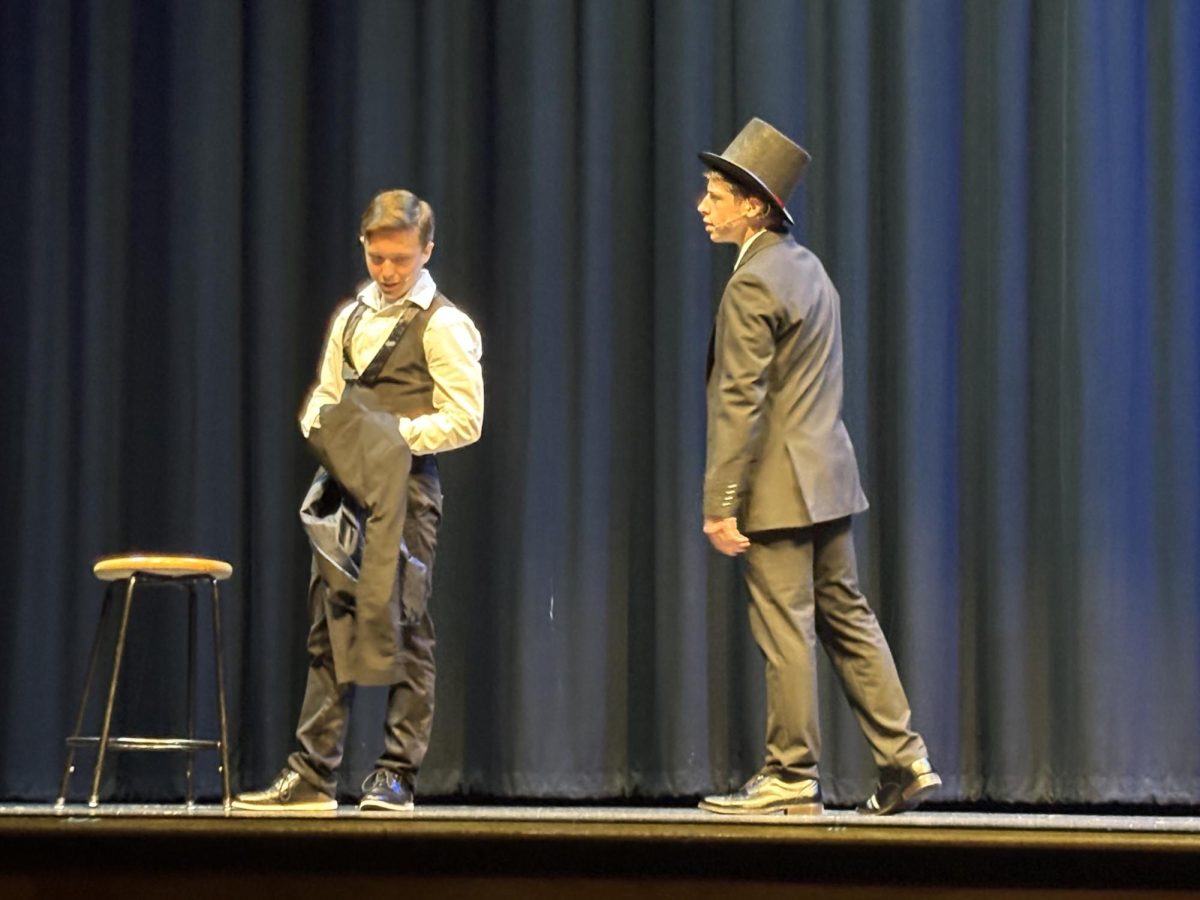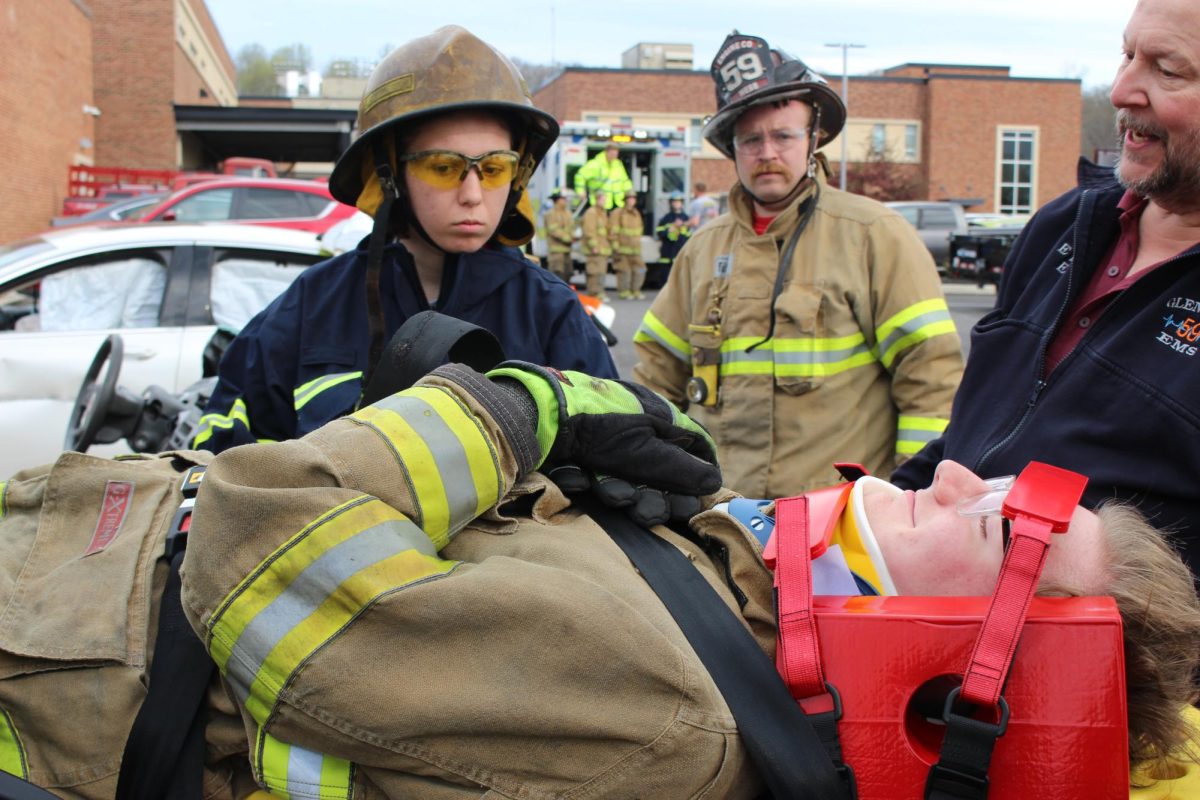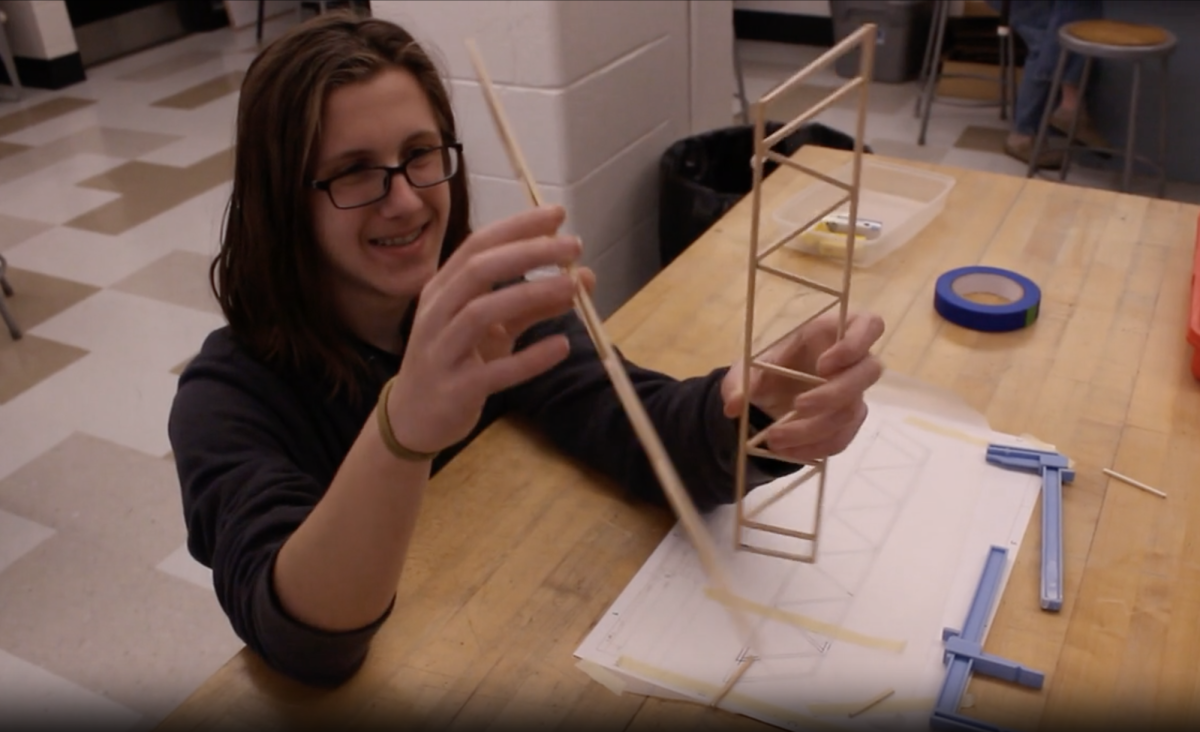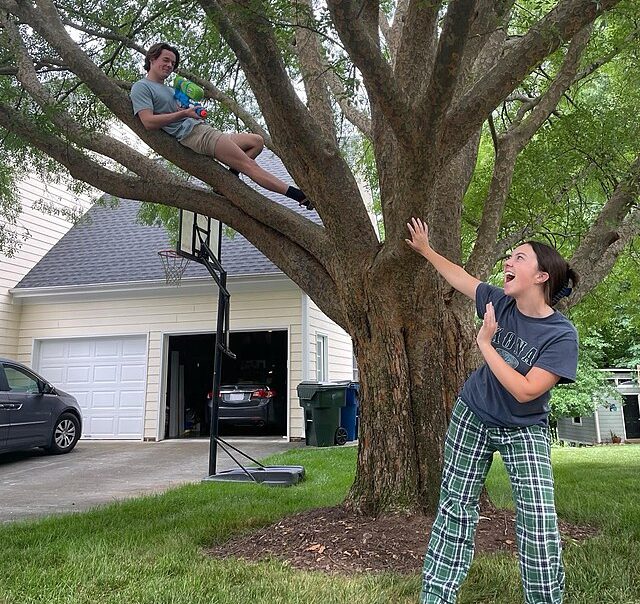Engineering teacher JC Lewis took the Engineering and Construction classes to the 10th Annual Punkin’ Chunkin’ Contest on Nov. 3 at the York Suburban baseball field. The goal of the contest was to design a device that can throw a pumpkin to hit a specific target anywhere from 10 to 65 meters away.
The designers seniors Ian and Robert Rosul in cooperation with the construction team of junior Nathan Lobo, senior Madden Losey, junior Kollin Humphrey and sophomore Jadon Heiland took sixth place out of 11 teams who entered.
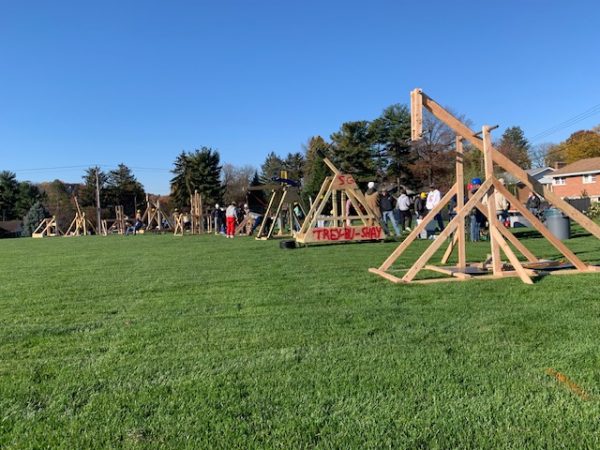
Photograph Courtesy of JC Lewis (JC Lewis)
The Courier chatted with Lewis about this event and its specific details.
What is the Punkin’ Chunkin’ competition about?
The pumpkin chunkin competition takes teams from all over York County and has them work in small teams of six students to toss a pumpkin to hit different targets out in a field. So it’s an engineering design task¨, but also a problem in construction…We have to actually design and build whatever that device looks like- typically in what’s called a trebuchet.
How does the competition work?
We had 11 teams on Friday. [The numbers vary] from year to year, different teams were from different schools all over the area; Susquehannock, York Suburban, Spring Grove, and West York and everyone lined up on the York Suburban baseball field. There was a line, and its kinda there one person that take turns launching pumpkins at three different targets we don’t know how far the targets are until the day of the competition so the teams have to change the weight the counterweight that they have to launch for a short distance or a long distance out to the field depending on the target.
How many people are on the team?
There are six people maximum for each team. This year we have two students from an engineering class and four students from Mr. Martins’s construction class.
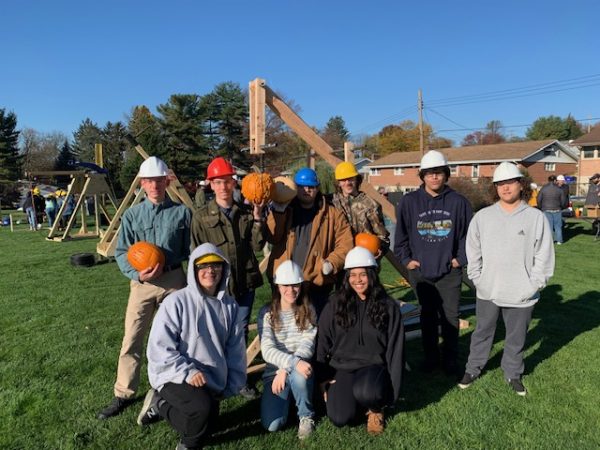
Photograph Courtesy of JC Lewis
(JC Lewis)
How is the person selected?
So what we did in Engineering 2 class principles of Engineering we had a design competition where each small team throughout the class made their own design that they thought would be best after we learned about how trebuchet’s work and they presented to the class and it was actually the students who put together a scoring system to select the best design and that is the design that we made¨.
How many hours does it take for you to make the catapults?
It really depends it is completely 100% done by the students I like to think I am the guard well on the highway and they are really driving the bus so it took them two and half weeks of class time, homeroom time, and a little bit a time after school to actually put the thing together if you would ask them they would have wished that they got a little bit sooner so they could have time to test.
What type of materials do you use to build the catapults?
Great question: we made the trebuchet out of wood with 2 by 4 and 2 by 6 and then this year the teams decided to re-enforce different parts with steel that we had from Mr. Martins’s metal shop.
What type of reward do you get when you win?
First and foremost you get pride that you won the day but there are just little trophies for first, second, and third place. It is really more about problem-solving and the real-world experience that it is that will come out with prize money or anything like that.
Why is this important?
This is really important because, on our engineering side, we do a lot of theory behind the scenes where we are doing calculations form but actually going to have a chance to build something and to make something so our engineers have to take something from design and theory all the way through and say “ can you actually use this” on the construction side it’s not often that those folks get real plans from a designer from an engineer that they need to put together so both sets of our teammates are doing what they are reeling doing in the industry in the real world.
How does participating in this competition impact life after high school?
I think it’s a chance to see if this is something to do there’s engineers all over the area at the competition checking in to make sure everything is safe and everything is set up they are talking with our design team ahead of the competition and so those guys work on like this each day in the real world so this is a chance for students when they are done with highschool.
How far does the catapult go?
It really depends on how constructed they really are so didn’t go that far at all had two launches we probably put it at 50 meters and then our trebuchet broke the best one this year measured and flung a pumpkin about 440 feet if you put it in perspective well over the length of a football field.
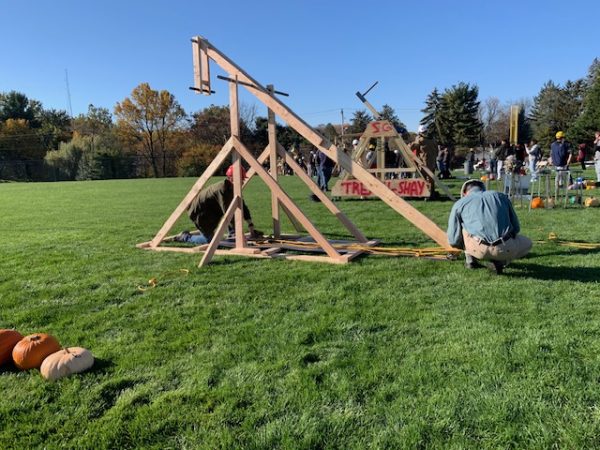
Photograph Courtesy of JC Lewis (JC Lewis)



